Aztec Deities in Full Splendor
A set of four remarkable early 19th-century watercolors of Aztec gods and goddesses. These accomplished watercolors were executed by William H. Shippard, a significant but largely unheralded English Mesoamericanist who copied the images from Mexican codices. Shippard is chiefly remembered today for being a close friend of George Catlin, the famous American painter of North American Indians.
These stunning watercolors, all 19th-century manuscript originals by William H. Shippard, are faithful interpretations of the originals, based primarily on two well-known Mexican codices, the Codex Telleriano-Remensis, a 16th-century codex now in the Bibliotheque Nacional de France, and another codex held in the Vatican.
The four sheets contain a total of 24 figures (six to each sheet) and represent Shippard's systematic recording of important figures from Aztec religious mythology. Manuscript annotations by Shippard surround each figure and identify the particular deity shown, including variant names. The original captioning appears in a dark sepia ink, with later glosses, also by Shippard, in a contrasting blue ink. A portion of these annotations may represent Shippard's attempts at translating the Spanish glosses that appear in the original codices. The Spanish glosses have been cited by modern scholars as highly significant:
Like other Indo-Hispanic pictorial manuscripts compiled in post Conquest Central Mexico, the Codex Telleriano-Remensis is a complex assemblage of images and texts. Its illustrations still adhere to prehispanic stylistic and iconographic traditions current at Contact in the Basin of Mexico, although the content of the migration section contrasts with other accounts. It differs, however, from wholly pictorial indigenous screenfolds since it also bears numerous glosses, written primarily in Spanish by several hands to identify individual images and explain their meaning - Quiñones Keber.
Given Shippard's notations, which cite both codices, it stands to reason that he was interested in the differences between the two sources. It is likely Shippard was developing his own theory about the images through his interpretation of these differences. The present set of watercolors is among the few records of Shippard's interpretive analysis of Aztec codices. As such, they stand as important early documents by a British researcher on early Mexican civilizations, presaging later 19th-century writers and the deluge that came in the 20th-century. Indeed, Shippard stands as a pioneer in such comparative studies of Mexican codices. For a more recent view see: Eloise Quiñones Keber's article, "The Codex Telleriano-Remensis and Codex Vaticanus A: Thompson's Prototype Reconsidered," Mexicon, Vol. 9, No. 1 (January 1987), pages 8-16.
A few standout deities shown in Shippard's watercolors:
- Quetzalcoatl, the Feathered Serpent, here called "Serpent Quecalcoatle, god of air." Based on the Codex Telleriano-Remensis.
- Tepeyollotl, God of caves, earthquakes and echoes, and depicted here as an elegant jaguar, based on the Codex Telleriano-Remensis.
- Xolotle. God of Twins. The Axolotl derives its name from this deity.
Aztec Deities
Pre-Columbian Aztec religion encompassed a labyrinth of spiritual complexity, profoundly reflected in the vivid imagery of gods and deities within renowned Mexican codices, such as the Borgia Codex. The intricate Mexica belief system mirrored the societal hierarchy, with a pantheon where gods wielded the power to dictate the fate of the cosmos, heralding its creation and destruction up to five times. Among these deities, Quetzalcoatl, the Feathered Serpent, stands out for its significance in the cycle of death and rebirth, embodying the blend of earthly and celestial realms. The depictions in these codices reveal the gods in multifaceted roles, often possessing multiple identities and names, showcasing the rich tapestry of Mesoamerican spirituality. The complex interplay of mythology, cosmology, and ritual in Aztec religion is evident throughout the surviving codices and early colonial manuscripts, here vividly brought to life through Shippard's original watercolor drawings, highlighting the deep connection between divine imagery and the natural and supernatural worlds.
Here follows a summary of the Aztec deities depicted on the four sheets.
- Tonacaciqua or Chicomeconatl. Tōnacācihuātl wife of Tonacatecuhtli. Goddess of fertility, called also Sutchiquetzal... Sutchiquetzal is on the contrary goddess of pregnancy and wife of Cuiteotl, God of corn and is differently represented. See onward Cod. Tel. p. 30 of Cod. Vat. p. 53. Sometimes styled "The Heavenly Lady."
- Ancient Penance and austerities [unidentifed figure seemingly spitting blood] with pencil note in Shippard's hand: "This figure to be omitted."
- Tepeolotlee the Lord of Animals. [Tepeyollotl]. The voice who caused deluge to cease. See Plate 10, p. 183 vol. 2....
- Quecalcoatle. Quequalcoatle. Air. Cod. Vat.
- Toplian Quecalcoatl. Time of offering to Priests of Temple.
- Quequecoyotl Calcoatl. God of Otomie Festival of Discord.
- Tzinteotl, Cinteotli. Abundance.
- Tlavizcalpantecutli, God of Morning.
- Miquitlantecotli, Mictlantecuhtli or Lord of the Dead.
- Patecatle, husband of Mayaquil or Mayahuel. God of Wine. [known as the discoverer of peyote and the lord of pulque].
- Eagle and Tiger / Quatle - Ocelotle.
- Ytzlacoliuhqui. Itztlacoliuhqui. Lord of Sin (Blind). [known as the lord of frost]
- Tlalchitonatio. Tlalchitonatiuh. God of light.
- Chalchiutotoli or the Devil Tetzcatlipoca.
- Penance, Austerities. The Sign of the Seven Eagles was a day applied to the Moon.
- Chanitco or Cuaxolotle. Lord of Chile or the Yellow Woman
- Xochiquecal the wife of Cintentle. Festival of Women Weavers Washing and Spinning.
- Quecalcoatle in the Golden House.
- [These two figures to be omitted]
- Yzcaina the wife of Miquitlate. Yzcuina, Goddess of Shame. Wife of Miquitlantecotli.
- The Serpent Quecalcoatle. God of Air.
- Yzpapalotle or Xounco. Goddess of Pollution.
- Tamoancha or Xuihitlycacan. Tree Blood distillery.
- Xolotle. God of Twins [Dog-headed soul guide for the dead, also god of monsters, misfortune, sickness, and deformities. The native Mexican Axolotl is named after him.]
William Henry Shippard's Mexican Paintings
William H. Shippard (1803-1865) was a pioneering 19th-century British museologist - an unsung progenitor of modern-day museum anthropology. While he is chiefly remembered as a friend of George Catlin, Shippard's profound interest in the ancient civilizations of Mexico connects him with a cohort of British contemporaries that include Lord Kingsborough and the showman William Bullock. Shippard's fascination with Mesoamerica propelled him to amass a significant collection of visual material derived from Aztec codices which he copied himself. A figure of some intrigue and scholarly ambition, Shippard endeavored to establish the Museum of Mankind in London, which seems to have evolved from his deep interest in early Mexican cultures. Although the museum did not come to fruition, Shippard's original artwork, mainly pen and ink drawings enriched with vibrant hand coloring, based on Mexican codices held in European libraries and collections, remains a valuable historical source, particularly for understanding the allure of Mexican antiquity within early 19th-century British collecting circles.
Capt. William H. Shippard, a friend of George Catlin and an avid watercolorist and museologist, was also a pioneering British Mesoamericanist. Shippard appears in British newspaper notices from the 1840s as a London-based lecturer who spoke about Native Americans and Mexican antiquities. We know he was a friend of George Catlin, and that he was involved in attempts to organize early London museum exhibitions of Mexican antiquities. In the latter efforts Shippard would seem to coincide with a group of like minded prominent English collectors interested in Mexican topics active during the 1820s and 1830s, including Lord Kingsborough and the bibliomaniac Sir Thomas Phillipps, among others. He seems to have been an armchair anthropologist and would-be museum founder, whose ambitious ideas for a London-based museum never got off the ground - at least not beyond the prospectus-printing stage. Certain aspects of Shippard's career are akin to William Bullock, the showman and connoisseur of Mexican antiquities who actually did travel to Mexico. Bullock published a notable book about his Mexican travels, and achieved a level of recognition in his day as the empresario of London's Egyptian Hall, wherein he thrilled large London audiences with his elaborate exhibitions of exotica, including Mexican items.











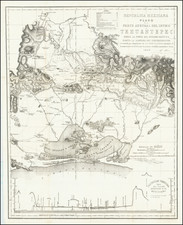
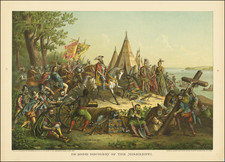
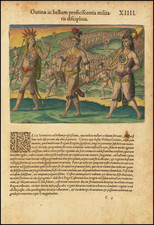
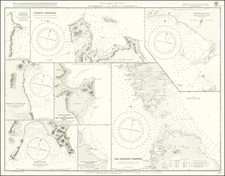
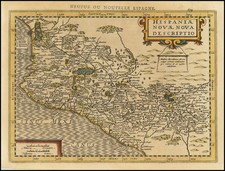
![[ Cabo San Lucas ] Amer. Sep. No. 63 Partie De La Vielle Californie](https://storage.googleapis.com/raremaps/img/small/96937.jpg)